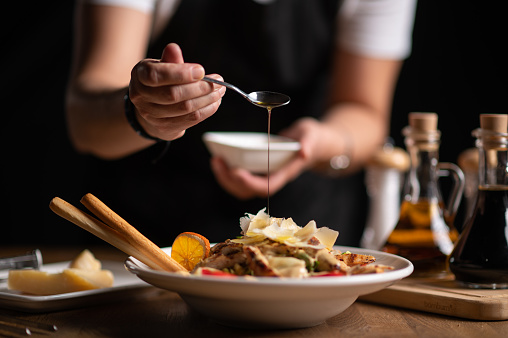Fiber plays a crucial role in maintaining health, especially for older adults. Here’s why it’s important:
Digestive Health: Fiber helps prevent constipation by adding bulk to stool and promoting regular bowel movements. It’s essential for maintaining a healthy digestive system.
Heart Health: Consuming enough fiber can help lower cholesterol levels. Soluble fiber binds to cholesterol in the gut, reducing its absorption and supporting heart health.
Blood Sugar Regulation: Fiber slows down the absorption of sugar, helping regulate blood sugar levels. This is particularly beneficial for older adults at risk of diabetes.
Weight Management: High-fiber foods are often less calorie-dense and more filling. Including fiber-rich options can aid in weight management and prevent overeating.
To meet daily fiber needs, men aged 51 or older should aim for 28 grams, while women of the same age need 22.4 grams1. Incorporate whole grains, fruits, vegetables, beans, and lentils into your diet. Remember to drink plenty of water to support healthy digestion!.
Fiber is essential for a healthy diet. Here are some high-fiber foods you might consider:
- Lentils: A powerhouse legume.
- Split peas: A soluble fiber source.
- Pinto beans: Hearty and healthy.
- Kidney beans: Great for red bean chili.
- Chickpeas (Garbanzo beans): Also known as hummus heroes.
- Chia seeds: Rich in omega-3 and fiber.
- Barley: Delicious and chewy.
- Pear: A soluble fiber fruit.
- Oats: A breakfast staple.
- Broccoli: A cruciferous superstar.
- Quinoa: A gluten-free superfood.
- Edamame: Provides complete plant protein.
- Brussels sprouts: Awesome mini cabbages.
- Black beans: High in protein and potassium.
- Artichoke hearts: Nutrient-dense veggies.
- Raspberries: Antioxidant-rich berries.
- Blackberries: Juicy and sweet.
- Whole-wheat pasta: A healthy carb swap.
- Almonds: Unsaturated fat nuts.
- Avocados (Haas): A healthy fat condiment.
- Apples: Pectin-packed snack.
- Green peas: Bright and antioxidant-rich.
Remember to gradually add high-fiber foods to your diet and stay hydrated!
I try to post meaningful, informative information on this site to benefit and enlighten you and to remind myself, at my age, to stay a regular guy.
Stay Healthy
M.N.Curry















